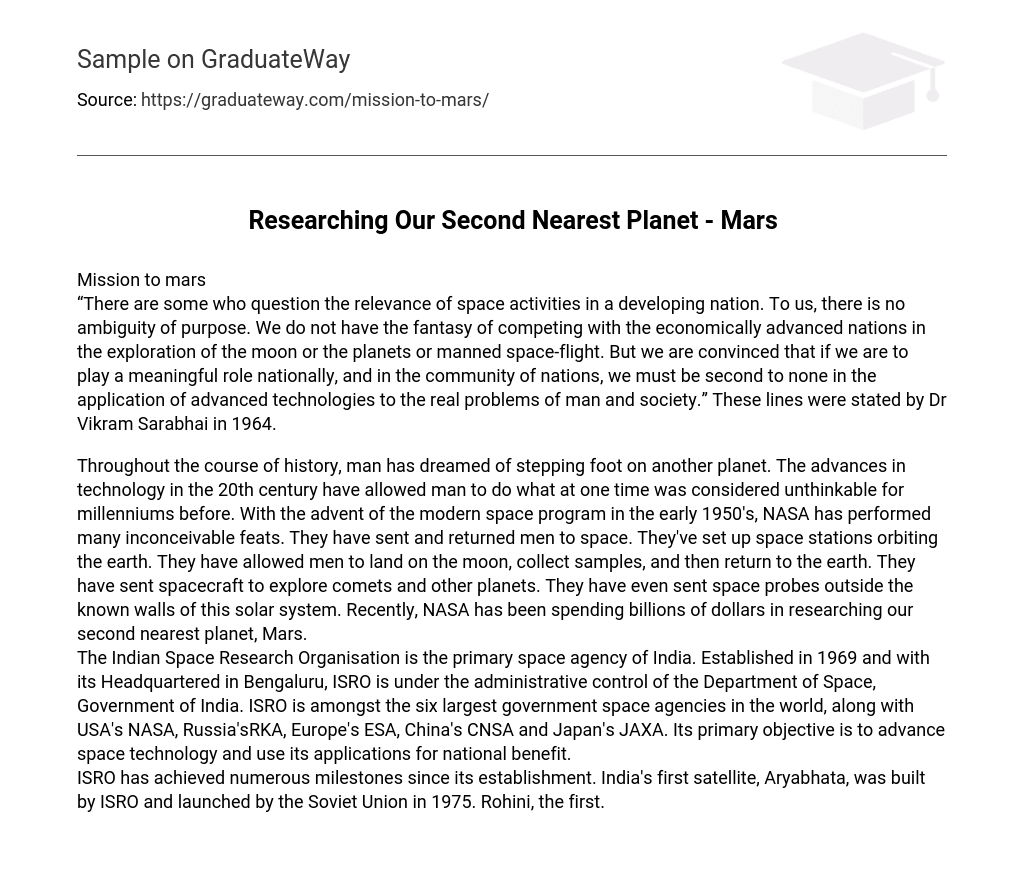Mission to mars
“There are some who question the relevance of space activities in a developing nation. To us, there is no ambiguity of purpose. We do not have the fantasy of competing with the economically advanced nations in the exploration of the moon or the planets or manned space-flight. But we are convinced that if we are to play a meaningful role nationally, and in the community of nations, we must be second to none in the application of advanced technologies to the real problems of man and society.” These lines were stated by Dr Vikram Sarabhai in 1964.
Throughout the course of history, man has dreamed of stepping foot on another planet. The advances in technology in the 20th century have allowed man to do what at one time was considered unthinkable for millenniums before. With the advent of the modern space program in the early 1950’s, NASA has performed many inconceivable feats. They have sent and returned men to space. They’ve set up space stations orbiting the earth. They have allowed men to land on the moon, collect samples, and then return to the earth. They have sent spacecraft to explore comets and other planets. They have even sent space probes outside the known walls of this solar system. Recently, NASA has been spending billions of dollars in researching our second nearest planet, Mars.
The Indian Space Research Organisation is the primary space agency of India. Established in 1969 and with its Headquartered in Bengaluru, ISRO is under the administrative control of the Department of Space, Government of India. ISRO is amongst the six largest government space agencies in the world, along with USA’s NASA, Russia’sRKA, Europe’s ESA, China’s CNSA and Japan’s JAXA. Its primary objective is to advance space technology and use its applications for national benefit.
ISRO has achieved numerous milestones since its establishment. India’s first satellite, Aryabhata, was built by ISRO and launched by the Soviet Union in 1975. Rohini, the first.





